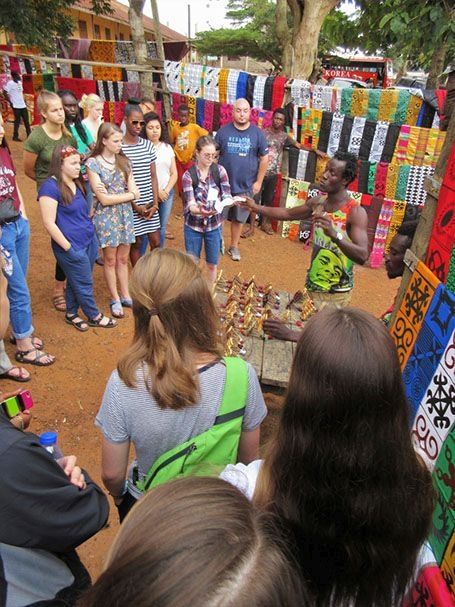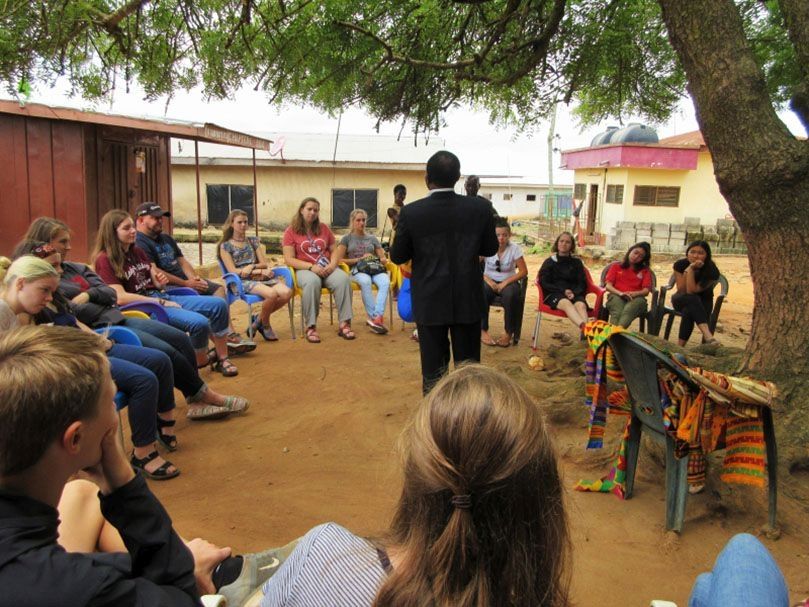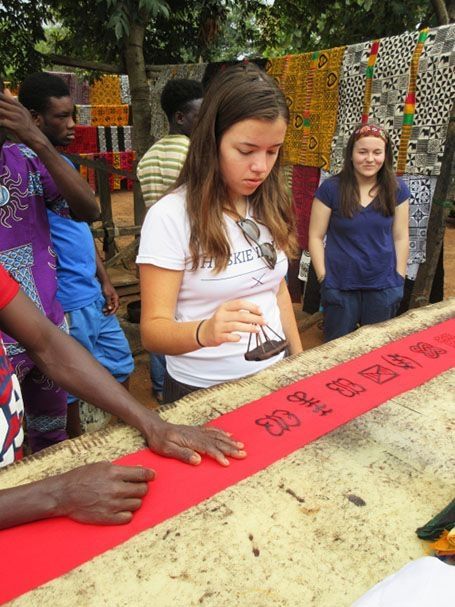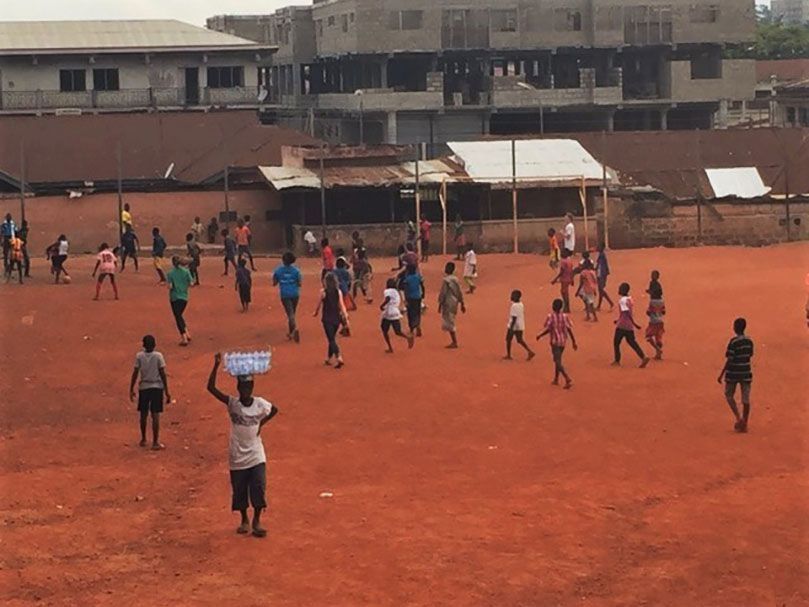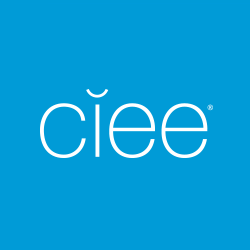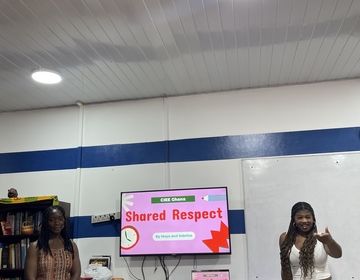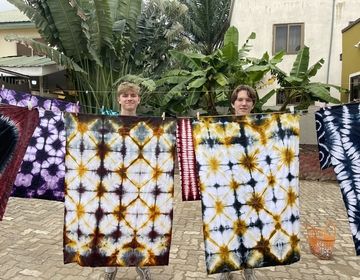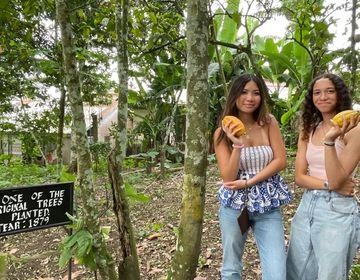Of Ashanti Kings & Woven Things
The program leaders had a good laugh when the students asked if they would be able to sleep in on Saturday. We bent over, slapped our knees, cackled – the whole thing. We had to meet for breakfast at 6:00 am so we could get on the road to Kumasi by 6:30. Sleep in… Ha ha ha ha! Oh, it’s still funny.
If our trip to Cape Coast was Ghanaian Roads 101, this trip was 102. Baffling as it may seem to our American sensibilities to take four and a half hours to go 250 kilometers (155 miles), that was the best case scenario. Unfortunately, Ghana laughs at best case scenarios like program leaders laugh at the idea of sleeping in – our bus broke down twice and we had to be picked up by another bus coming from Kumasi. We made it in about seven hours; Patience 301 is a prerequisite for Ghanaian Roads 101.
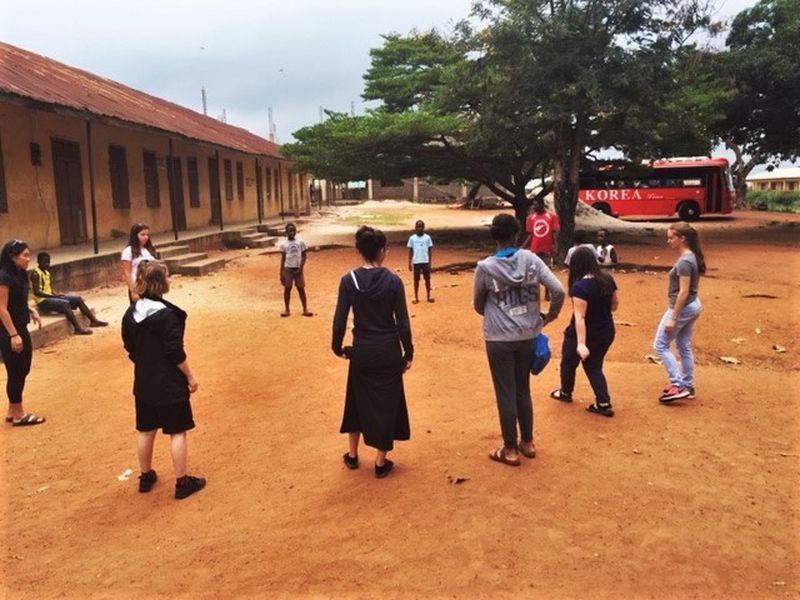
Once in the traditional capital of the Asante Kingdom, we checked into our hotel, threw down our stuff, and glanced longingly at the pool as we flew off to our next stop: Manhyia Palace (pronounced “mahn-SHE-ah”), the former residence of the Asantehene, or king of Ashanti. Here, the students got a history lesson on the Kingdom of Gold, the land of the Kotoko Warriors, the home of the Golden Stool, the birthplace of Twi. They learned about a kingdom they never knew existed, a place so full of history and traditional culture that they were left to wonder why they hadn’t found it in a textbook before.
Next, we went to Kejetia Market, one of the largest open-air markets in West Africa. This was one of the few street-level experiences where the students were able to go off in their own groups and be immersed in a truly Ghanaian space. Some of the less sure students or those without bearings whatsoever (*cough*bailey*cough*) followed program leaders into the engulfing insanity and subtle order of Kejetia. Some loved the experience, while others were unsettled by the extreme lack of personal space or familiar sights. There’s just something about severed goat heads that really brings up thoughts of home.
Some of the students preferred to play football with the locals out in the open air.
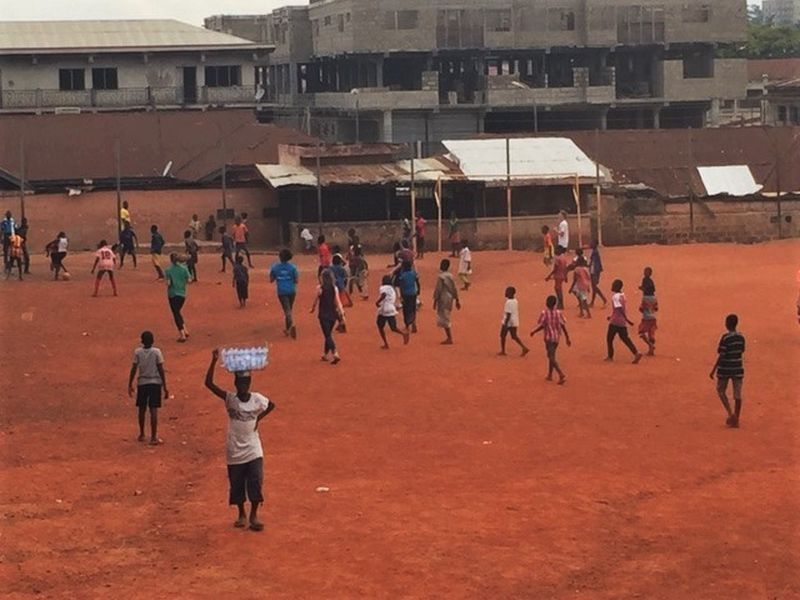
The next day could affectionately be called Cloth Day (disclaimer: no one actually called it that). We checked out of our luxurious hotel (goodbye, pool, our time together was too short) and headed to Ntonso, the traditional Adinkra stamping village. Adinkra symbols are a deeply proverbial system of emblems that represent Akan ideas on how to be an upstanding citizen and human being, and they are ubiquitous across the whole country. At Ntonso, we learned how the traditional dye is made from badie bark, and even took turns pounding it in a giant mortar.
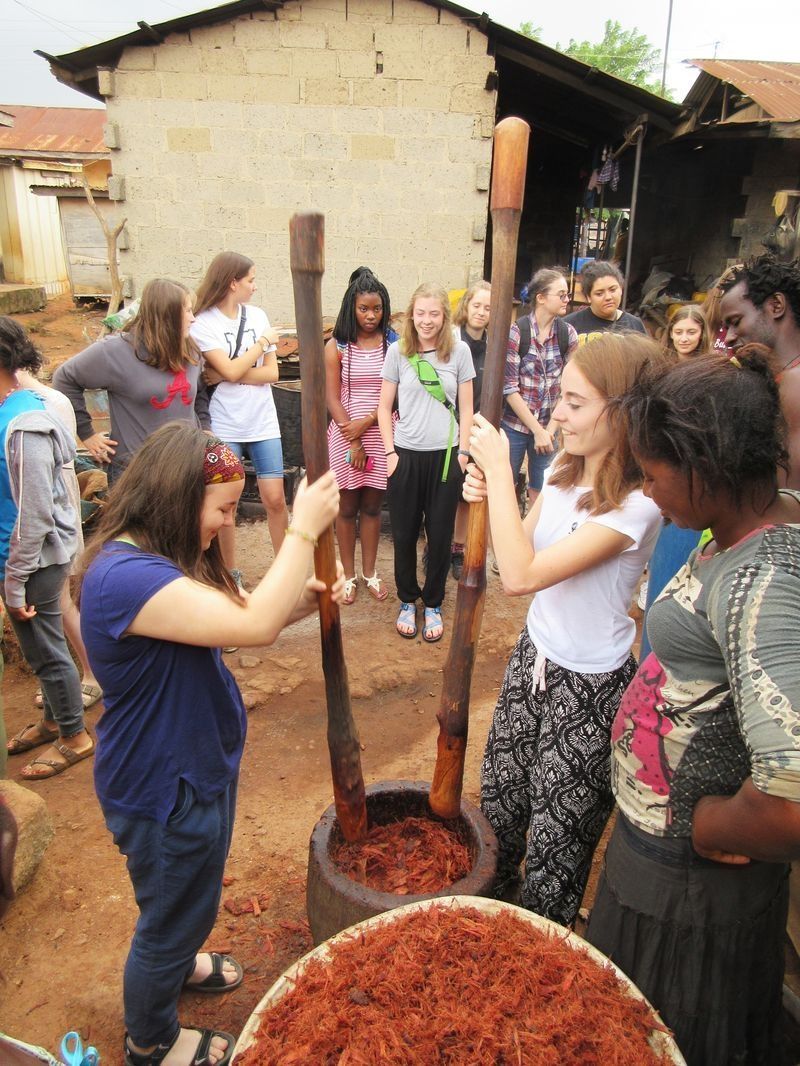
We then each picked out an Adinkra symbol and stamped a single, long piece of handwoven cloth with the dye. Some students then bought Adinkra cloth or the stamps made from calabash so they can go back to America and stamp everything in sight (hide your babies, hide your drapes).
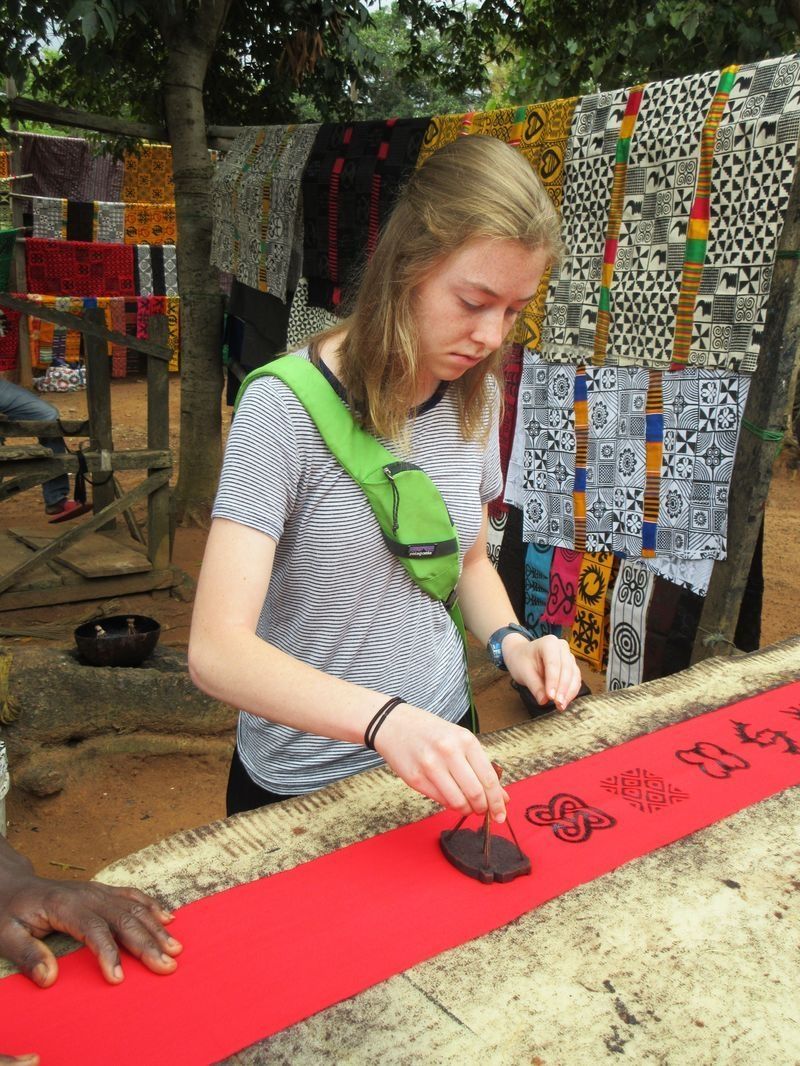
Next came Bonwire, the home of kente cloth in Ashanti. Kente is woven by hand on long looms into strips that can then be stitched together to make robes and blankets. After a short lecture on the history and meaning of kente designs by a professor and native of Bonwire, the students got to shop among the weavers’ stocks. Some of them even tried to operate the loom! We call their design “American Amateur”—a notable lack of skill, but chock full of FREEDOM.
Departing Bonwire, most of us were too exhausted to notice the sporadic thudding of potholes or the soulful sounds of Grace D. singing into a Pringles can on our way back to Accra.
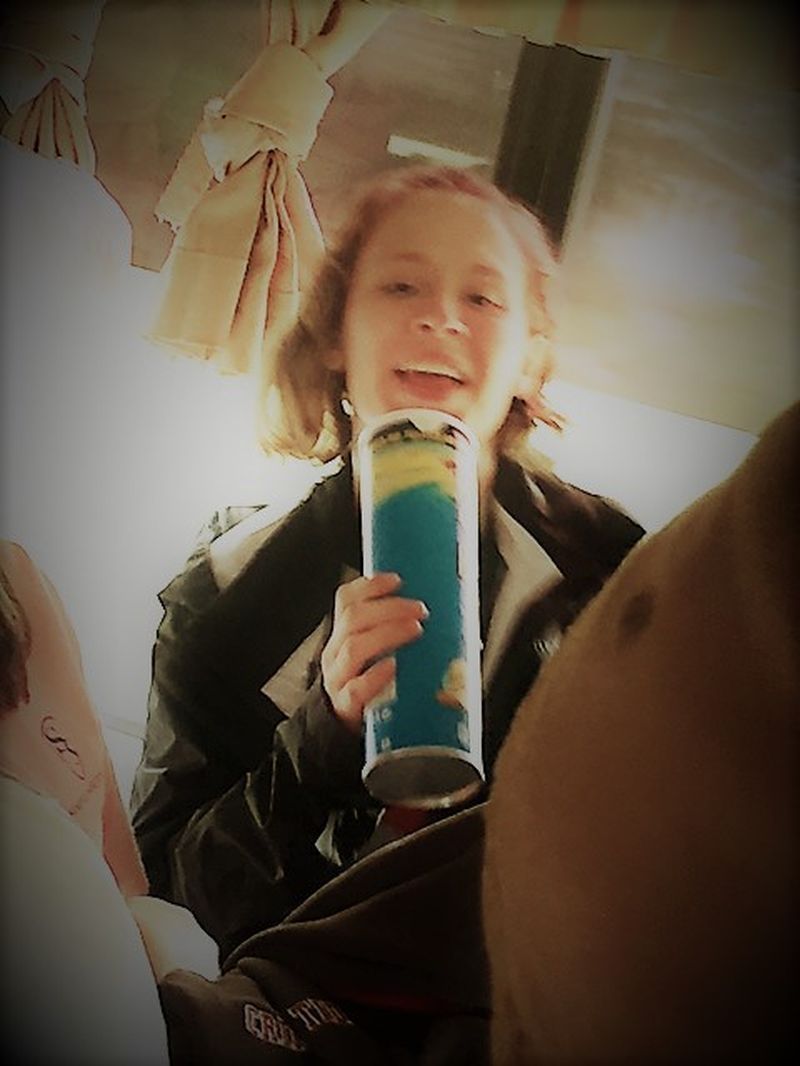
We’re heading into our last week here on Session 2 in Legon, Ghana. Keep an eye out for the events of our home stretch!
Brady, Kayla, and Steve
Related Posts
Student Project: Shared Respect
During this program, the participants worked in groups to create projects reflecting their experiential learning from the last three weeks. The following is a selection from Sabrina Addo and Maya... keep reading
Tying Up Loose Ends
With only a few days left in our program, we are embracing every opportunity to make lasting memories and reflect on our incredible journey. One of the highlights of this... keep reading
Visiting Ghana’s First Cocoa Farm
Student Blog Takeover: Milo and Anthea visit Ghana's first cocoa farm
